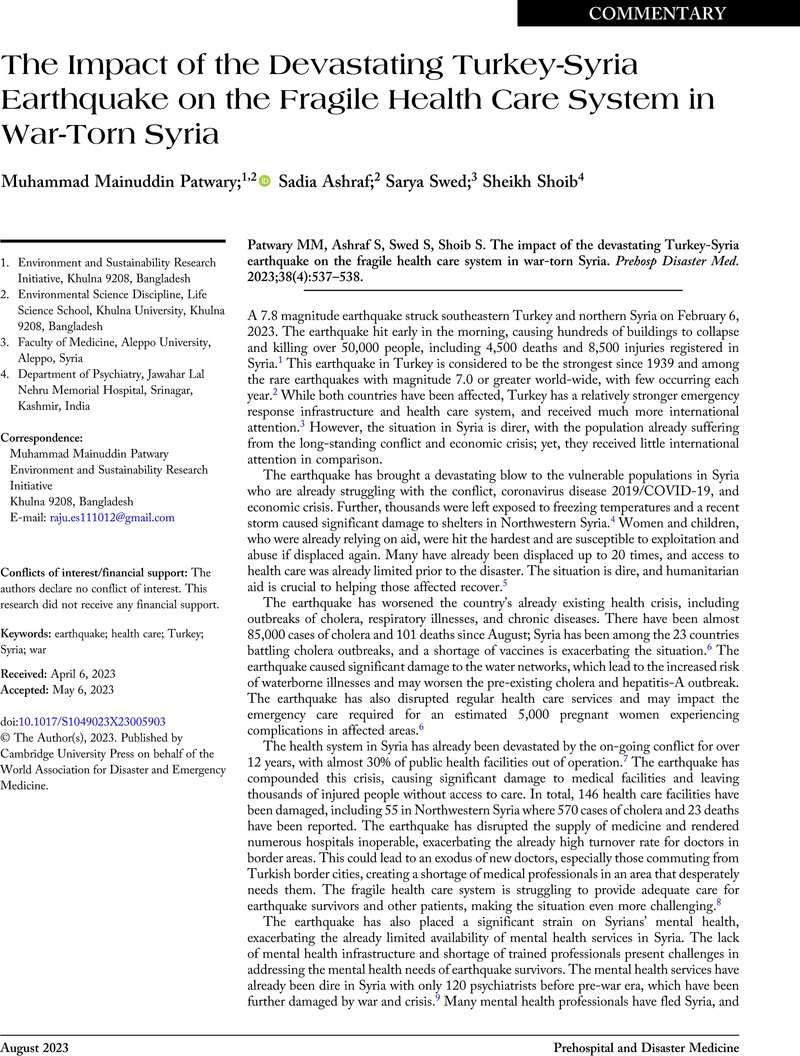Crossref Citations
This article has been cited by the following publications. This list is generated based on data provided by Crossref.
Ahmed, Sirwan Khalid
Chandran, Deepak
Hussein, Safin
SV, Praveen
Chakraborty, Sandip
Islam, Md. Rabiul
and
Dhama, Kuldeep
2023.
Environmental Health Risks After the 2023 Turkey-Syria Earthquake and Salient Mitigating Strategies: A Critical Appraisal.
Environmental Health Insights,
Vol. 17,
Issue. ,
Santarisi, Abeer
Hertelendy, Attila J.
Issa, Fadi
Franc, Jeffrey
Woodward, Christina
Mathew, Dana
Noel, Jacob
Curtis, Timothy J.
Miller, Eric D.
Agubosim, Chinonso
Kenyon, Van
Boasi, Ryan
AlShaikh, Eman
Voskanyan, Amalia
and
Ciottone, Gregory R.
2024.
Analysis of Disparities in the Initial Health Care Response to the February 2023 Earthquakes in Turkey and Syria.
Disaster Medicine and Public Health Preparedness,
Vol. 18,
Issue. ,




